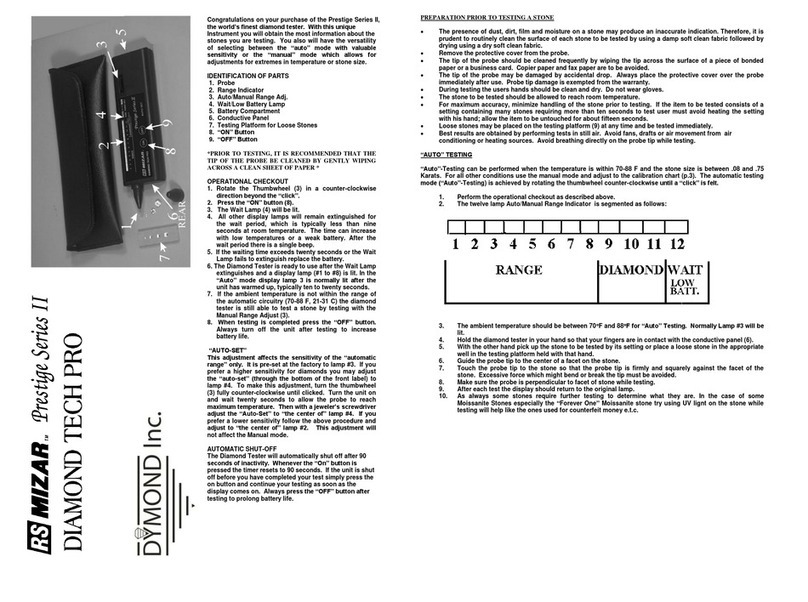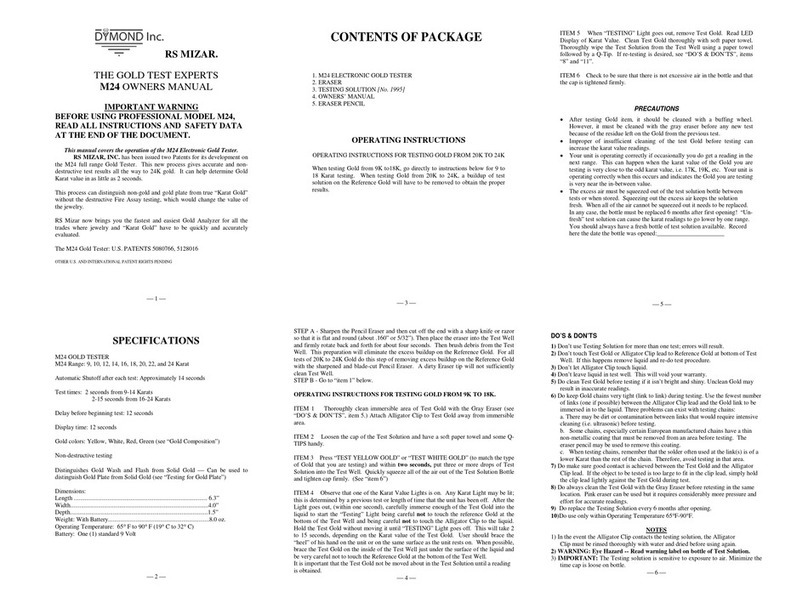
DO’S AND DON’TS
Don’t leave liquid in the Test Well. Do clean after each test or 5 minutes.
Do occasionally clean reference Gold at the bottom of the Test Well with a cotton
swab, especially if you suspect any test error.
Do clean the test Gold, before testing. Unclean Gold may result in inaccurate
readings. In any case, do clean the Gold before retesting in the same area.
Do keep Gold chains very tight (link to link) during testing. Use the fewest number
of links (one if possible) between the alligator clip and the Gold link to be immersed
into the liquid. Three problems can exist when testing chains.
1. There may be dirt or contamination between the links that would require
intensive cleaning (i.e. Ultrasonic) before testing.
2. Some chains, especially certain European manufactured chains have a thin
non-metallic coating that must be removed before testing that area. The
eraser may be used to remove this coating.
3. When testing chains, remember that the solder often used at the link(s) is
of a lower Karat than the rest of the chain. Therefore, avoid testing in that
area.
Do make sure good contact is achieved between the test Gold and the alligator clip.
If the object to be tested is too large to fit in the clip, hold the clip tightly against the
test Gold during testing.
Do always clean the test Gold surface with the eraser before any repeat testing.
Do replace the Electrolyte and Activator kit every 18 months.
Don’t use chemicals for more than 5 minutes. Once chemicals are dispensed in the
Test Well, they may be used for multiple testing for a period of up to 5 minutes.
Don’t touch the test Gold or alligator clip to the reference Gold at the bottom of the
Test Well. If this happens, remove liquid, carefully clean reference Gold at the
bottom of the Well with a cotton swab.
Don’t let the alligator clip touch the liquid.






























